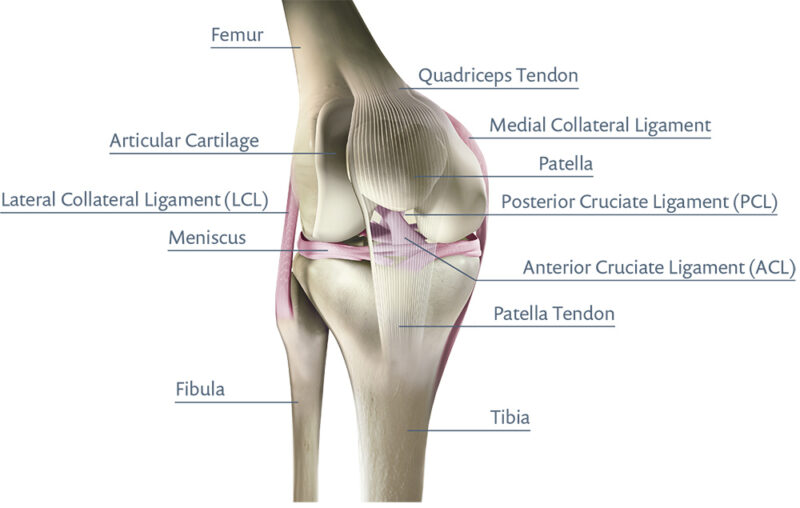ACL Reconstruction: Is It Right for Me?
A torn ACL (anterior cruciate ligament) is one of the most common knee injuries, especially affecting active people who play sports. Dr Dan Fick outlines what you need to know about ACL reconstruction surgery.
ACL (anterior cruciate ligament) reconstruction surgery is a type of knee arthroscopy that aims to replace a torn ACL and restore knee stability and mobility.
What Is the ACL?
The ACL is one of four major ligaments in the knee. Ligaments are strong bands of tissue that keep your joints in place. In the knee, the ligaments connect the thighbone (femur) and the shinbone (tibia).

The knee has four major ligaments: anterior cruciate ligament (ACL); posterior cruciate ligament (PCL); medial collateral ligament (MCL); lateral collateral ligament (LCL).
Anterior cruciate ligament (ACL):
The ACL is the most common ligament that tends to get injured. It’s located in the centre of the knee and controls the rotation and forward movement of the shinbone. The ACL is often stretched and/or torn during a sudden twisting motion, so if you play sports such as football, basketball or skiing, you may be at risk of an ACL injury.
Posterior cruciate ligament (PCL):
This ligament in the centre of the knee controls backward movement of the shinbone. The PCL is also a common knee ligament to be injured, but this is usually as a result of sudden impact, such as a sports tackle or a car accident.
Medial collateral ligament (MCL):
This ligament helps to stabilise the inner knee. The MCL can be injured as a result of a blow, pressure or stress on the outside of the knee.
Lateral collateral ligament (LCL):
This ligament gives stability to the outer knee and could be damaged as a result of an injury that pushes the knee from the inside.
If you’ve damaged your ACL, we can advise you on the best course of action.
ACL Reconstruction Surgery
ACL reconstruction surgery involves replacing the ligament with a piece of healthy tendon. Although tendons are different types of tissue to ligaments, they begin to act like ligaments once in place.
During this surgery, I will make small surgical incisions around your knee so I can insert an arthroscope, a device that lets me inspect the inside of the joint via a video monitor.
Using the arthroscope, I will remove the torn ligament and drill tunnels into the bottom of the thighbone and the top of the shinbone. I will create a new ligament from your hamstring tendon or the middle of your patella tendon. This graft is passed through the tunnels that have been drilled and screwed or stapled into place until it heals into the bone.
The main benefit of the procedure is that your knee will be stable again and should not give way when you’re enjoying sports or other activities.
Risks and benefits:
A potential risk of the surgery is that you may experience graft failure – although this affects only about 10% of people who have had the procedure. If this happens, you may need revision surgery to fix the ligament again, but we can minimise the risk of graft failure with a rehabilitation program.
Recovery
After your procedure, you’ll need crutches for the first 2–3 weeks and you should exercise with low-impact activities such as walking, swimming and cycling for the first 3 months. At about 10–12 months after surgery, you should be able to get back to strenuous sports. We will get you started on a physiotherapy program to help you get back on your feet as quickly as possible.

